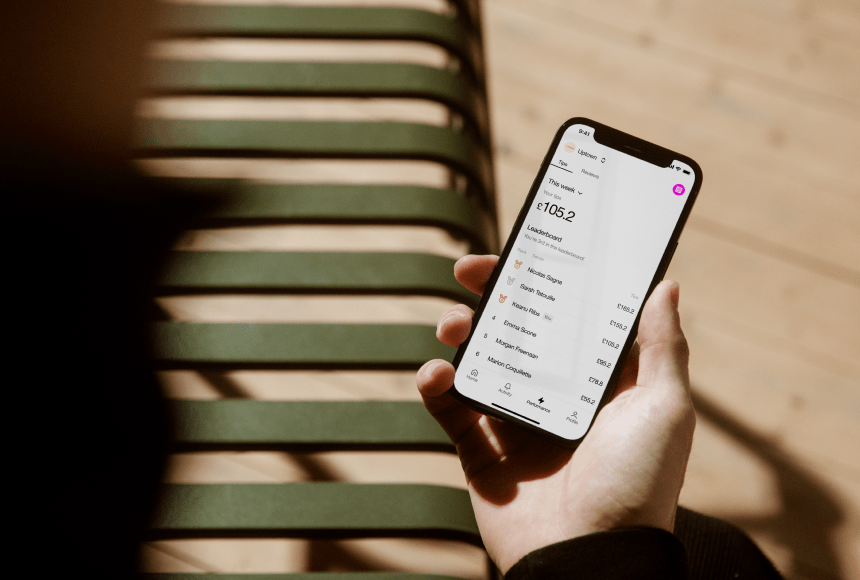
Reimagining Gratuities in the Modern Restaurant
Why the Shift to Digital Tipping Matters
Leaving a few coins on the table or adding a tip to a card receipt has always been the time-honoured way to reward great service. Yet as more and more diners go cashless, the classic approach to gratuities is losing relevance. Enter digital tipping, a method that’s taking hold across the UK. Instead of rummaging for change or signing off an extra amount, customers can add tips with the tap of a phone or click of a button.
According to Hospitality Net (source), an increasing number of British diners prefer contactless payments for meals—tipping included. This trend has implications for restaurant owners, from boosting staff satisfaction to streamlining back-office tasks. Here’s how digital tips work, the advantages they bring, and how you can integrate them seamlessly into your operation.
Understanding the Basics of Digital Tipping
Digital tips typically occur when a diner settles their bill electronically, either by scanning a QR code at the table, tapping a phone to pay, or completing a transaction on a card machine. In each case, they’re prompted to add a gratuity. The beauty lies in its simplicity: no extra coins, no messy notes, and no separate tip jars. The amount is tracked in real time, often visible on a cloud-based dashboard where managers can see how much has come in for the day.
- Integration with Payments: The tip prompt appears at checkout, letting diners round up or choose a set percentage. They simply confirm their choice before completing payment.
- Immediate Recording: Once the tip is submitted, it’s automatically logged in the system with all relevant details—like which server or table was involved.
- Transparent Distribution: At the end of the shift or week, managers can allocate gratuities fairly, ensuring staff trust the process.
In a nutshell, the traditional tip experience is swapped out for a frictionless digital flow—one that suits increasingly cashless customers and lifts a burden from restaurant staff and managers alike.
Why Go Digital? The Core Advantages
While the old envelope-in-the-back-office method has worked for decades, it’s not without its flaws. Digitising your tipping structure can solve many common headaches:
- Speedier Close-Outs:No rummaging for coins or cross-checking scrawled notes. Each tip is automatically recorded, so managers can reconcile totals in minutes rather than dragging the process into the late evening.
- Simplified Fairness:When all tips are logged systematically, you can pre-configure how they’re split—whether each server keeps their own, or if you share across the entire team. Less guesswork, fewer staff disputes.
- Better Security and Accuracy:Loose cash can vanish or get miscounted. Digital logs reduce theft risk and miscalculations, boosting confidence that everyone receives what they’ve earned.
- Happier Customers:When diners don’t have to rummage for the right change or wait for a server to bring a card machine, they’re more likely to tip—and to tip generously—because the process is so seamless.
Along the way, you’ll likely see intangible perks too: staff are less stressed, diners depart in good moods, and your brand stands out as tech-savvy and convenient.
The Technology Behind Digital Tipping
Curious about how the system actually runs under the hood? Different platforms take different approaches, but most revolve around three key pillars:
- POS Integration: In an ideal scenario, your point-of-sale (POS) system and the digital tipping platform share data. After staff enters an order, the system automatically generates a total and suggests tip options to the customer on a phone or a payment terminal. Completed payments and tips sync back into your POS records.
- Cloud-Based Dashboards: Managers can track aggregated tip amounts, see daily or weekly trends, and break down how much each staff member has earned. Everything is accessible from a secure login, often updated in real time.
- Flexible Payouts: Some solutions let managers schedule tip disbursements—daily, weekly, or monthly. Others even facilitate direct deposit to employees’ bank accounts, cutting down on envelopes stuffed with cash.
This technical foundation ensures a smooth experience for everyone: diners pay quickly, servers see tips add up, and managers handle fewer back-office headaches. The specifics vary, but these three pillars form the heart of most digital tipping ecosystems.
Incorporating Tips Into a QR Code Payment Flow
QR code payment has skyrocketed in popularity. Guests scan a code—often found on the table or the receipt—and instantly access their bill on their smartphone. Then they can pay, tip, and even leave a Google review if they like. It’s a fluid, frictionless process that suits modern diners who increasingly rely on their phones for daily tasks.
When it comes to tipping, the synergy is clear:
- Instant Prompts: The moment a customer taps “Pay,” they see a tip screen. It might offer suggested amounts, a custom field, or even a short note encouraging them to support the team who made their meal memorable.
- One-Stop Payment: The tip is added to the final total automatically. No extra steps, no separate transaction required.
- Receipt and Confirmation: Diners receive digital confirmation of the final total, tip included. This transparent step fosters trust—no mysteries about “what happened to my tip.”
Embracing a QR code–based approach merges well with the broader contactless trend, plus it highlights your restaurant as an innovator that values guest convenience.
Addressing Staff Concerns
Any shift in how tips are handled can raise worries: servers might fear losing out if everything goes digital, or worry about the new system being complicated. The key is open communication, training, and emphasising benefits. A few crucial points to cover:
- Transparency:Show staff how each transaction is logged and how your chosen tip-sharing policy works. Many solutions let employees verify in real time how much has come in, which eases fears about hidden distribution or manager discretion.
- Ease of Use:Explain that removing the cash element actually simplifies tasks. No more scurrying for change or battling with a card machine at peak hours—diners handle everything themselves.
- Opportunity for Upselling:When staff no longer wrestle with collecting payments, they can focus on upselling desserts or special cocktails. Higher bills often translate into bigger tips, benefiting everyone.
A short training session is often all it takes. Let employees practice scanning a code, adding a tip, and seeing how the numbers appear in the system. Hands-on demos go a long way toward eliminating fear of the unknown.
Improving Customer Satisfaction (and Loyalty)
While digital tips streamline operations behind the scenes, they also enrich the customer experience. People want to pay quickly, especially if they’re on a lunch break or heading to a movie. Eliminating manual tip calculations or waiting for the server to return with a card machine can feel like a revelation.
- Reduction in Wait Times: Diners appreciate the autonomy. They’re not stuck waving at staff for the bill. Instead, they handle it whenever they’re ready, using the device already in their pocket.
- Positive Lasting Impression: The final stage of a meal often frames how people recall the entire experience. A sleek digital payment process, including tipping, leaves them on a good note and more likely to recommend your place.
- Personalisation: Some systems allow for customised tip messages or branding. You can add a friendly note—“Thanks for supporting our team!”—to give a personal touch to this final interaction.
Given how quickly news travels via online reviews and word of mouth, a small improvement in your tipping process can set you apart from competitors still relying on outdated methods.
Managing Taxes and Compliance
Keeping HMRC happy is a priority for every UK restaurant. Manually tracking tips poses plenty of pitfalls: missing receipts, staff members forgetting to report small amounts, or confusion over who was on duty during which shift. Digital tipping systems record all gratuities, simplifying tax reporting and compliance with regulations.
You can choose to classify tips as part of wages (subject to National Insurance contributions) or as separate gratuities. Whichever route you opt for, having an electronic log means you’re prepared if you face an audit or if staff have queries about their reported earnings. Accuracy and transparency shield your business from potential penalties or accusations of unfair tip handling.
Tracking Performance and Motivating Teams
Because every tip is digitally assigned to a particular bill or staff member, you gain a window into performance. Who consistently garners above-average tips? Which shifts see a dip in gratuities, and why? Identifying these patterns can help you fine-tune staff schedules and reward top performers.
- Data-Driven Incentives: If you see certain employees excel, you might set up a friendly competition or highlight their tactics for upselling. This fosters a supportive culture where staff learn from each other’s successes.
- Shift Adjustments: If certain time slots show low tipping but high footfall, you could experiment with different staffing levels or promotions to increase guest satisfaction (and thus gratuities).
Armed with real-time insights, you can adapt quickly to changing conditions. Staff feel empowered when they know that working a Saturday night rush can genuinely pay off, and managers can allocate resources to match the data, improving efficiency across the board.
Choosing the Right Tool: Sunday
For restaurants considering digital tipping, sunday stands out by merging QR code payments with integrated tip functionality. The diner simply scans, selects a tip if they wish, and completes the transaction. On the management side, you get a consolidated dashboard detailing all tips, plus direct integration with your POS. No fuss, no messing about with separate spreadsheets. This approach exemplifies how digital tipping should feel: quick, intuitive, and beneficial for staff, customers, and you—the restaurant owner.
Preparing Your Team for a Digital Transition
Successful adoption of digital tips often relies on how you introduce the change. A few pointers:
- Explain the “Why”:Reassure employees that this isn’t about controlling tips—it’s about efficiency, fairness, and a modern guest experience. Show them how it can boost their take-home pay by streamlining the entire process.
- Train with Real Scenarios:Have your staff walk through a live demonstration, from scanning the QR code to finalizing the tip. Hands-on practice soothes fears more effectively than a bullet list in a staff manual.
- Gather Feedback Quickly:After launch, ask staff (and maybe a few regulars) how they feel. Adjust any small kinks, like signage or tip distribution settings, before they become bigger issues.
With an informed and engaged team, the rollout can feel less like a jarring shift and more like a natural evolution in how your restaurant does business.
Elevating the Dining Experience, One Tap at a Time
When you switch to digital tips, you’re not just adopting a new piece of technology. You’re rethinking the customer journey—making it faster, simpler, and more transparent. That final step of the meal, once a source of friction, becomes an opportunity to impress your guests anew and reassure your staff they’ll get their fair share accurately and promptly.
Beyond immediate convenience, digital tipping aligns with the broader shift toward contactless, data-rich solutions in hospitality. It arms you with insights for fine-tuning service, fosters staff loyalty by ensuring consistent tip distribution, and helps you stay on the right side of regulators. If you’ve been eyeing ways to modernise your operations without losing the personal warmth that makes your restaurant special, consider taking the leap into digital tipping. It could be the missing ingredient that elevates not just your finances, but also the overall dining atmosphere.
Find out more today
Drop us your details below and we’ll reach out within the next 24
More tips means a better service.
3X more tips mean 3X better guest-experience, and 3X better staff-retention.


